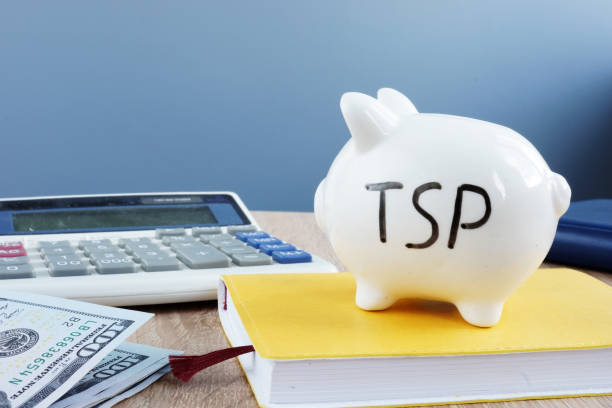
The start of the New Year provides an excellent opportunity to review your financial plans and strategize how to earn and save more money. It’s a superb opportunity for participants in the Thrift Savings Plan (TSP) to rethink a few crucial things about their contributions.
Below are some tips that might have a significant impact on federal employees’ TSP funds if implemented correctly and regularly.
1. The TSP Annual Contribution Limit for 2022 Has Changed
In 2022, the maximum annual contribution amount to the TSP will increase to $20,500 ($20,500/ 26 = $788 every pay period). The maximum contribution was $19,500 in 2021.
So if you plan to max out your contribution, you may have to save a little more—about $1,000 more.
2. The TSP Catch-Up Contribution Has Not Changed
Federal employees over the age of 50 can still contribute an extra $6,500 to the TSP each year. You can contribute more each pay period in the year you turn 50 ($6,500/26 = $250 per pay period). As the contribution limit rises, you’ll have to reselect this amount each year.
3. Aged 50 or Older Max Funding and Catch-Up Contributions
The maximum total TSP contributions per pay period will be $1,038 in 2022. This is the absolute maximum you can put into your TSP. This amount was calculated by adding the annual contribution of $20,500 ($788 every pay period) to the catch-up contribution of $6,500 ($250 per pay period).
4. TSP Roth Funding
A Roth contribution to the TSP is a great way to create tax-free retirement savings with tax-free growth. Your contributions to a Roth TSP go into the TSP after tax has been withheld. That implies your contributions are taxed at your current income tax rate. The benefit here is that you won’t be required to pay taxes when you take your contributions and any eligible earnings.
You might, however, want to start slow so that you can absorb and pay part of the income taxes now. To progressively absorb the additional tax burden, consider a percentage of your TSP contributions, such as 2% of your 5% total TSP contributions.
Keep in mind that your higher income may influence student grants and other concerns, although most people have found it beneficial.
5. The Contribution Allocations Approach
A contribution allocation shows how you wish to invest money that comes into your account for the first time each payday. Once the money arrives in your account, you can change how it’s invested using an interfund transfer (IFT).
If the stock market falls and you buy the TSP C, S, and I Funds each pay period, you’ll be buying at a discount. In such a situation, dollar cost averaging allows you to profit as the stock market recovers or rises.
So essentially, you’ll buy at low price levels to reduce the overall impact of stock market volatility on your TSP and potentially increase gains over time—making a falling market work in your favor.
This approach only applies to Contribution Allocation since it is the amount purchased each pay period rather than your overall balance.
6. Rebalance Your Account Yearly
Consider whether your TSP will be used for income if you are nearing retirement, especially if you are within 3-4 years of retiring. If this is the case, create a safe money retirement income strategy involving the TSP G Fund.
What is your contingency plan if the stock market drops in value? Taking monthly income from an asset that could lose money is a risky withdrawal approach.
If the asset decreases in value while you receive income, the market downturn’s impact is magnified. Recognize this threat and devise a strategy to limit it.
Withdrawals from the TSP are pro-rata, which means that an equal amount of money is taken out of each fund. You can’t just take money out of the G Fund as you have to do it proportionately across all funds, which could be risky.
When replacing the G Fund for income, there may be some excellent alternatives to examine outside of the TSP you could consider.
7. Avoid Emotional Responses
When the stock market falls, as it certainly will, you must avoid selling cheap and transferring your whole portfolio to the G Fund. The majority of TSP investors (and investors in general) are unable to time the market. They usually purchase low and sell high.
Instead, make a plan that considers how much risk you’re willing to take and how much money you’ll need, and stick to it. Create a contingency plan in the event of a market downturn so you aren’t left in a risky position.
Conclusion
Retirement planning is a lengthy and unending process, but the effort is well worth it. These 7 points will allow you to strategize better to maximize your TSP this year.
Contact Information:
Email: [email protected]
Phone: 3604642979







